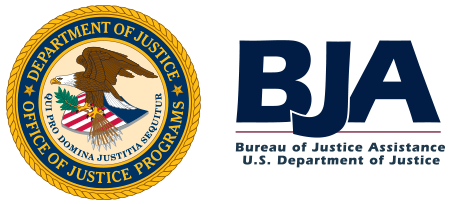Maryland Justice Reinvestment Initiative

In FY 2014, Maryland incarcerated over 20,000 individuals, despite experiencing a 19 percent reduction in prison admissions between 2005 and 2014.1,2 The state was spending $1.3 billion annually to incarcerate these individuals, a 10 percent growth in cost since 2006.3,4
In response, Maryland’s leadership established a bipartisan, inter-branch Justice Reinvestment Coordinating Council (Council), charged with making recommendations to reduce corrections spending and reinvest in enhancing public safety and reducing recidivism.5 In 2015, the Council undertook a comprehensive review of Maryland’s adult justice system, with assistance from the Crime and Justice Institute (CJI) and The Pew Charitable Trusts, and with funding from Pew and the Bureau of Justice Assistance, a component of the Department of Justice’s Office of Justice Programs.6 The Council found that the state was underutilizing noncustodial options, prison admissions were largely driven by people convicted of nonviolent offenses, and the current reentry resources were insufficient to support individuals returning to their communities.7
In May 2016, Governor Larry Hogan signed Senate Bill (SB) 1005 (also known as the Justice Reinvestment Act) based on the Council’s findings and recommendations. SB 1005 was created to improve public safety, reduce corrections spending, and reinvest avoided costs in evidence-based strategies to reduce crime and recidivism.8
Maryland’s JRI goals included:9
1. Reduce the state’s prison population and corrections spending.
2. Reinvest in strategies to increase public safety and reduce recidivism.
To date, Maryland has achieved the following:
- Reduced the average daily prison population.
- Reduced the percentage of people incarcerated for theft and drug offenses.10
- Made significant state and local investments with costs averted due to a reduction in the prison population.
1. Reduce the state’s prison population and corrections spending.
In its 2015 report, the Council identified three main contributors to Maryland’s prison population and corrections costs: a high number of people entering prison for supervision revocation and nonviolent offenses, an increase in average sentence lengths, and increased lengths of stay.11 The Council also found that Maryland’s sentencing policies relied heavily on jail and prison while underutilizing noncustodial options.12 Finally, the Council found that only 37 percent of individuals released from prison in 2014 were released on parole, and those who were released were often released, on average, nine months past their eligibility date.13 In FY 2014, Maryland spent $1.3 billion on incarceration.14
Based on these findings, the Council made recommendations to focus prison space on those convicted of serious and violent offenses, strengthen probation and parole, improve reentry practices, support local corrections systems, and ensure oversight and accountability.15 The Council estimated that, if Maryland fully implemented the policies in SB 1005, the state would avoid $247 million in corrections spending between FY 2017 and FY 2026.16
Noncustodial Options:
Community supervision or other options that do not require time in prison or jail.



2. Reinvest in strategies to increase public safety and reduce recidivism.
The Council recommended that any funds averted by making its recommended changes be reinvested in, among other things, treatment options and county-level grants.32 This was based on the Council’s finding that there was a significant gap between the behavioral health needs of individuals incarcerated and on supervision in Maryland and the treatments available to them.33 In addition, the Council found a lack of local services and programs throughout the state, leaving incarceration as the primary option for some communities. This led the Council to recommend that a portion of avoided funds be directed to local grants.34


Recidivism:
The earliest return to the Department of Public Safety and Correctional Services custody due to conviction for a new prison sentence, conviction to a new probation sentence, or return from community supervision.40
Additional Accomplishments and Information Related to Reforms
- The Justice Reinvestment Act set up multiple levels of oversight for the implementation of SB 1005.
- The Justice Reinvestment Act Oversight Board met regularly from 2017 to 2022 to monitor the progress and compliance of the implementation of the recommendations of the Justice Reinvestment Coordinating Council and the Act. The Board is pending appointments currently. The Board is pending appointments currently, and will meet once those appointments are made.41
- The Justice Reinvestment Advisory Board, established to provide advice to the Justice Reinvestment Oversight Board, started meeting in 2017 and continued to meet in 2024.42
- The Local Government Justice Reinvestment Commission, which represents Maryland counties, is charged with making recommendations regarding grants to local governments and creating measures to assess the effectiveness of the grants. The Commission started meeting in 2017 and continued to meet in 2024.43
- SB 1005 required the Division of Parole and Probation to create and use a matrix to guide the use of incentives and sanctions. An average of 1,091 individuals received sanctions from the matrix between 2018 and 2020. This increased to 1,188 individuals in 2022.44
Endnotes
- Justice Reinvestment Coordinating Council, Final Report (Annapolis, MD: 2015): 2, https://goccp.maryland.gov/jrcc/documents/jrcc-final-report.pdf.
- The Pew Charitable Trusts, Maryland Data Analysis Part 1: Prison Drivers (Annapolis, MD: 2015): 9, https://www.goccp.maryland.gov/jrcc/documents/presentation-20150729-prison-drivers.pdf.
- Justice Reinvestment Coordinating Council, Final Report (Annapolis, MD: 2015): 2, https://goccp.maryland.gov/jrcc/documents/jrcc-final-report.pdf.
- Urban Institute, Justice Reinvestment Initiative (JRI): Maryland (Washington, D.C.: 2020), https://www.urban.org/sites/default/files/2020/03/27/justice_reinvestment_initiative_jri_maryland.pdf.
- Justice Reinvestment Coordinating Council, Final Report, 2.
- Justice Reinvestment Coordinating Council, Final Report, 3.
- Justice Reinvestment Coordinating Council, Final Report.
- The Pew Charitable Trusts, Maryland’s 2016 Criminal Justice Reform (Annapolis, MD: 2016), https://www.pewtrusts.org/-/media/assets/2017/11/pspp_marylands_2016_criminal_justice_reform.pdf.
- The Pew Charitable Trusts, Maryland’s 2016 Criminal Justice Reform, 2.
- Maryland Department of Public Safety and Correctional Services, Recidivism Report (Annapolis, MD: 2022): 6, https://dpscs.maryland.gov/publicinfo/publications/pdfs/2022_p157_DPSCS_Recividism%20Report.pdf.
- Justice Reinvestment Coordinating Council, Final Report (Annapolis, MD: 2015), 2 https://goccp.maryland.gov/jrcc/documents/jrcc-final-report.pdf.
- Justice Reinvestment Coordinating Council, Final Report, 6.
- Justice Reinvestment Coordinating Council, Final Report, 9.
- The Pew Charitable Trusts, Maryland’s 2016 Criminal Justice Reform (Annapolis, MD: 2016), https://www.pewtrusts.org/-/media/assets/2017/11/pspp_marylands_2016_criminal_justice_reform.pdf.
- Justice Reinvestment Coordinating Council, Final Report (Annapolis, MD: 2015): 13, https://goccp.maryland.gov/jrcc/documents/jrcc-final-report.pdf.
- Justice Reinvestment Coordinating Council, Final Report, 24.
- Urban Institute, Justice Reinvestment Initiative (JRI): Maryland (Washington, D.C.: 2020), https://www.urban.org/sites/default/files/2020/03/27/justice_reinvestment_initiative_jri_maryland.pdf.
- Maryland Justice Reinvestment Coordinating Council, Practitioner Guide to SB1005 (Annapolis, MD: 2017), https://www.harcobar.org/site/wp-content/uploads/2017/09/MD-Practitioners-Guide-FINAL.pdf.
- Maryland Justice Reinvestment Coordinating Council, Practitioner Guide to SB1005, 7.
- Maryland Justice Reinvestment Coordinating Council, Practitioner Guide to SB1005, 20.
- Maryland Justice Reinvestment Coordinating Council, Practitioner Guide to SB1005, 5.
- Maryland Justice Reinvestment Coordinating Council, Practitioner Guide to SB1005, 13.
- The Pew Charitable Trusts, Maryland’s 2016 Criminal Justice Reform, 9.
- Justice Reinvestment Coordinating Council, Final Report (Annapolis, MD: 2015): 24, https://goccp.maryland.gov/jrcc/documents/jrcc-final-report.pdf.
- “DPSCS Annual Data Dashboard”, Maryland Department of Public Safety and Correctional Services, accessed November24, 2023, https://dpscs.maryland.gov/community_releases/DOC-Annual-Data-Dashboard.shtml.
- Maryland Department of Public Safety and Correctional Services, Recidivism Report (Annapolis, MD: 2022): 6, https://dpscs.maryland.gov/publicinfo/publications/pdfs/2022_p157_DPSCS_Recividism%20Report.pdf.
- “DOC Data Dashboard,” Maryland Department of Public Safety and Correctional Services, accessed February 8, 2024, https://dpscs.maryland.gov/community_releases/DOC-Annual-Data-Dashboard.shtml.
- “DOC Data Dashboard,” Maryland Department of Public Safety and Correctional Services, accessed February 8, 2024, https://dpscs.maryland.gov/community_releases/DOC-Annual-Data-Dashboard.shtml.
- “Analysis of the FY 2024 Maryland Executive Budget”, 2023, accessed on February 8, 2024, 2024FY – Operating BudgetAnalysis – Q00B – DPSCS Corrections (maryland.gov), page 7.
- Justice Policy Institute, Safe at Home: Improving Maryland’s Parole Release Decision-Making (Washington, D.C.: 2023): 20, https://justicepolicy.org/wp-content/uploads/2023/05/Safe-At-Home.pdf.
- Department of Legislative Services Office of Policy Analysis, Department of Public Safety and Correctional Services Fiscal 2023 Budget Overview (Annapolis, MD: 2022), https://mgaleg.maryland.gov/pubs/budgetfiscal/2023fy-budget-docsoperating-Q00-DPSCS-Overview.pdf.
- Justice Reinvestment Coordinating Council, Final Report (Annapolis, MD: 2015): 25-27, https://goccp.maryland.gov/jrcc/documents/jrcc-final-report.pdf.
- Justice Reinvestment Coordinating Council, Final Report, 25.
- Justice Reinvestment Coordinating Council, Final Report, 25.
- The Pew Charitable Trusts, Maryland’s 2016 Criminal Justice Reform.
- Governor’s Office of Crime Prevention, Youth and Victim Services, Justice Reinvestment Local Government Commission Meeting (Annapolis, MD: 2023), https://goccp.maryland.gov/wp-content/uploads/9_6_23-Local-Government-Commission-Meeting-1.pdf.
- Maryland Department of Public Safety and Correctional Services, Recidivism Report (Annapolis, MD: 2022): 10, https://dpscs.maryland.gov/publicinfo/publications/pdfs/2022_p157_DPSCS_Recividism%20Report.pdf.
- Governor’s Office of Crime Prevention, Youth and Victim Services, Justice Reinvestment Local Government Commission Meeting, (Annapolis, MD: 2023), https://goccp.maryland.gov/wp-content/uploads/9_6_23-Local-Government-Commission-Meeting-1.pdf.
- Urban Institute, Justice Reinvestment Initiative (JRI): Maryland (Washington, D.C.: 2020), https://www.urban.org/sites/default/files/2020/03/27/justice_reinvestment_initiative_jri_maryland.pdf.
- Maryland Department of Public Safety and Correctional Services, Recidivism Report (Annapolis, MD: 2022): 6, https://share.crj.org/CJI/communications/Communications%20Resources/Writing%20Resources/CJI%20Citations%20Guidance_Final.pdf.
- Maryland Governor’s Office of Crime Prevention, Youth, and Victim Services, 2023 Report of the Justice Reinvestment Oversight Board, (Annapolis, MD: 2023), https://goccp.maryland.gov/wp-content/uploads/SG-%C2%A7-9-3212-SB-1005_Ch.-5153-2016-GOCPYVS-2023-Report-of-the-Justice-Reinvestment-Oversight-Board-MSAR-10907.pdf.
- Justice Reinvestment Advisory Board,” Maryland Governor’s Office of Crime Prevention, Youth, and Victim Services, accessed February 8, 2024, https://goccp.maryland.gov/councils-commissions-and-workgroups/justice-reinvestmentadvisory-board/.
- “Local Government Justice Reinvestment Commission,” Maryland Governor’s Office of Crime Prevention, Youth, and Victim Services, accessed February 8, 2024, https://goccp.maryland.gov/councils-commissions-and-workgroups/local-governmentjustice-reinvestment-commission/.
- Department of Legislative Services Office of Policy Analysis, Department of Public Safety and Correctional Services Fiscal 2024 Budget Overview (Annapolis, MD: 2023): 29, https://mgaleg.maryland.gov/Pubs/BudgetFiscal/2024fy-budget-docsoperating-Q00-DPSCS-Overview.pdf.

BJA strengthens the Nation’s criminal justice system and helps America’s state, local, and tribal jurisdictions reduce and prevent crime, reduce recidivism, and promote a fair and safe criminal justice system. BJA focuses its programmatic and policy efforts on providing a wide range of resources, including training and technical assistance, to law enforcement, courts, corrections, treatment, reentry, justice information sharing, and community-based partners to address chronic and emerging criminal justice challenges nationwide. To learn more about BJA, visit https://bja.ojp.gov, or follow us on Facebook (https://www.facebook.com/DOJBJA/) and Twitter (@DOJBJA). BJA is part of the Department of Justice’s Office of Justice Programs.

The Crime and Justice Institute (CJI) has more than a decade of experience as a JRI technical assistance provider, supporting states through assessing strengths and needs, conducting data analysis, facilitating policy development, and assisting with implementation.
Acknowledgments
This brief was prepared by Barbara Pierce, Dr. Katie Zafft, Dr. Clarissa Dias, Abigail Strait, Andy Tisdel, Bryson Bellow, Maya Yamagata, Josh Vezza, Amanda Coscia, and Ashley Neufeld.
This project was supported by Grant No. 15PBJA-21- GK-04350-JRIX awarded by the Bureau of Justice Assistance. The Bureau of Justice Assistance is a component of the Department of Justice’s Office of Justice Programs, which also includes the Bureau of Justice Statistics, the National Institute of Justice, the Office of Juvenile Justice and Delinquency Prevention, the Office for Victims of Crime, and the SMART Office. Points of view or opinions in this document are those of the author and do not necessarily represent the official position or policies of the U.S. Department of Justice.
Project Contact:
Barbara Pierce, Director of Justice Initiatives | CJI, comms@cjinstitute.org
